Paid Search vs. Paid Social: Key Differences and Best Use Cases Explained
Key Takeaways
- Paid search involves paying search engines for displaying ads at the top of search results, determined by factors like bid amount and ad quality.
- Bing ads are displayed at the top of organic search results with an 'ad' tag beside the meta description.
- Understanding ad placement methods on platforms like Google can enhance the effectiveness of paid search campaigns.
Paid search and social are two effective PPC advertising strategies to increase brand visibility through specific ad targeting. As a business owner looking to increase website traffic and sales, choosing the best choice for your ad campaigns can be dizzying.
In this article, I’ll simplify the key differences between paid search and social media and the best use cases for both.
What is Paid Search?
Paid search advertising involves paying search engines to display your ads on the top of the search results.
Usually, the ads are placed above the Search Labs and organic search results like this:
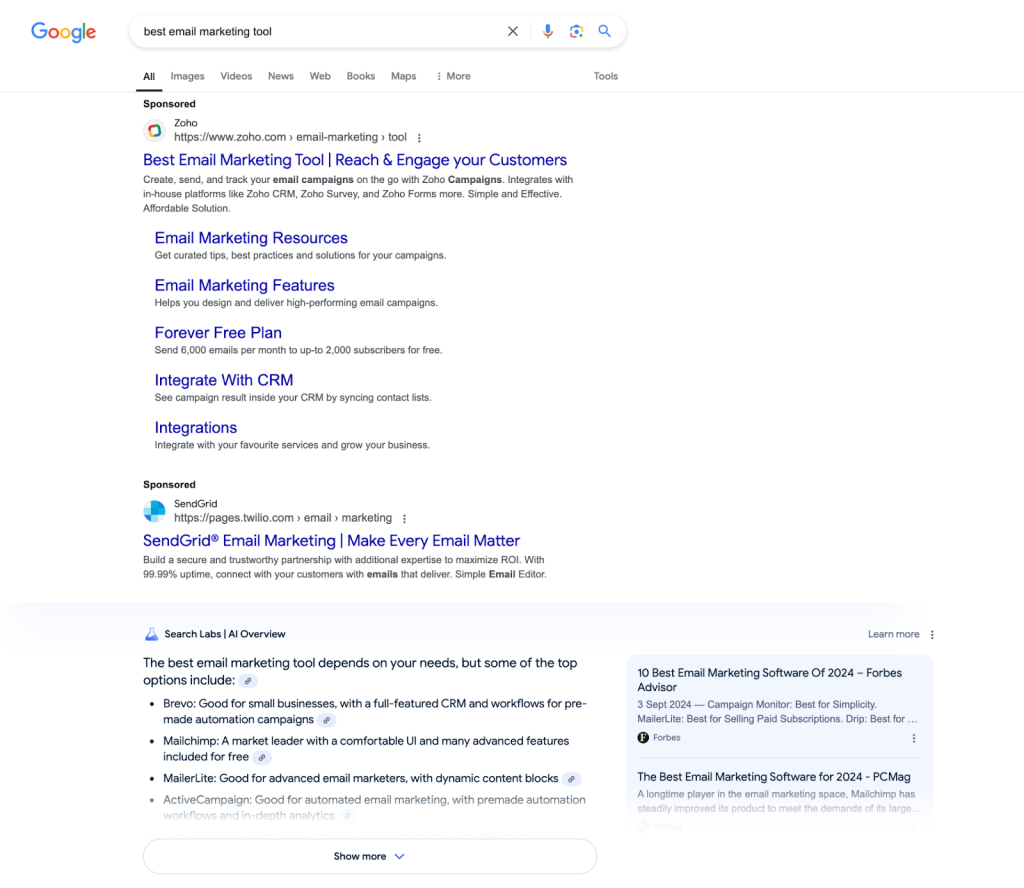
It can also be displayed in the middle or bottom of the search result pages, depending on your bid strategy:
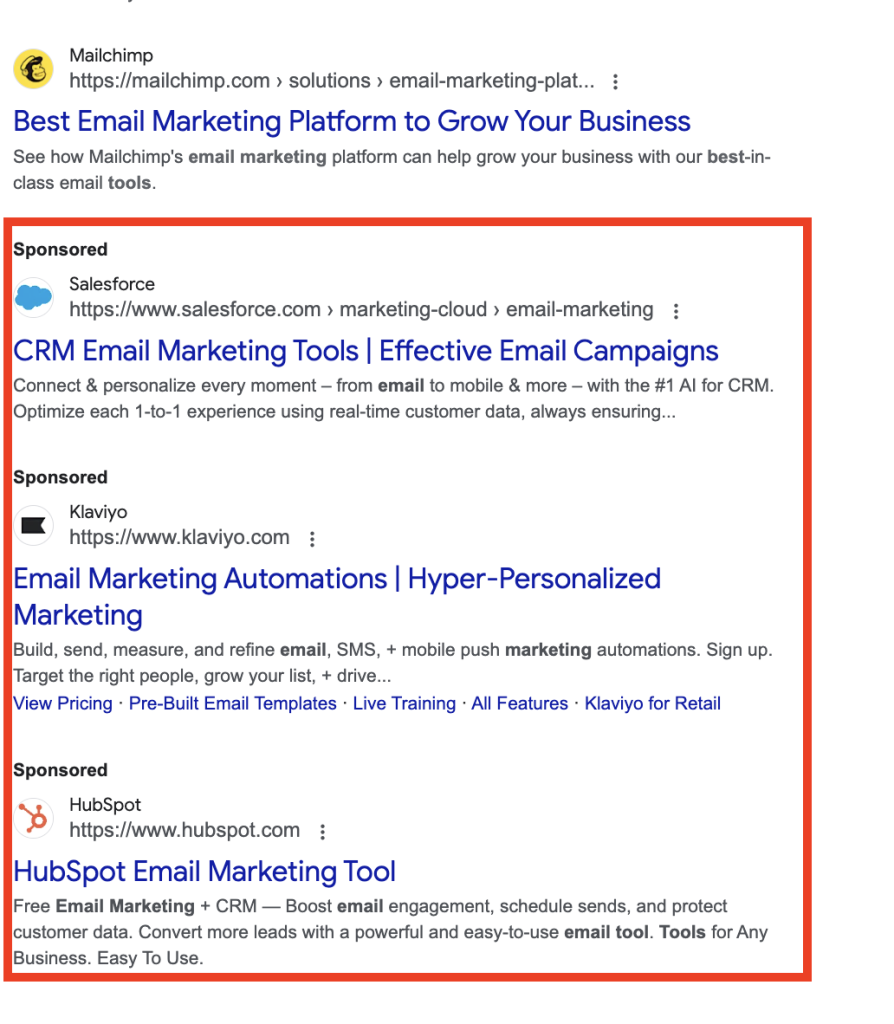
Bing ads are equally displayed on top of the organic search results, with the ‘ad’ tag beside the meta description:
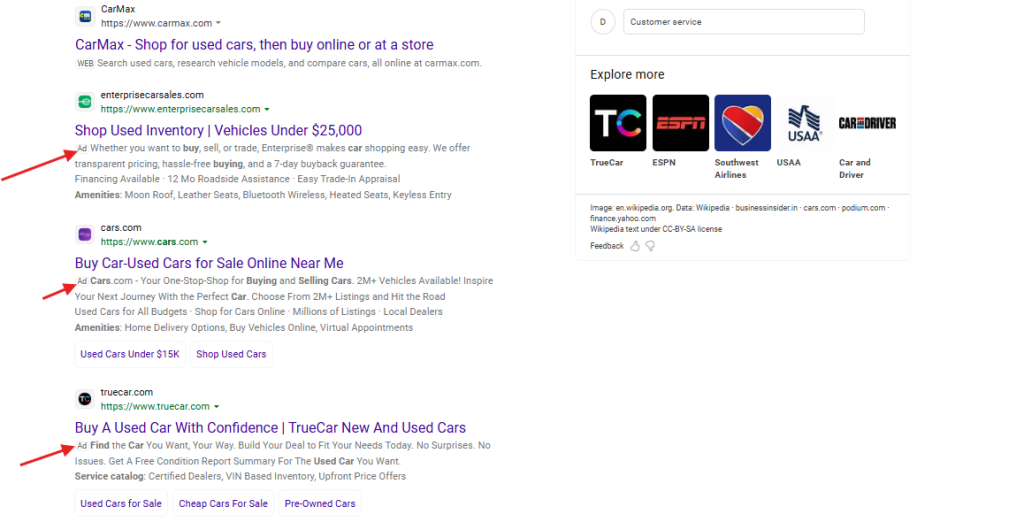
Every search engine has its method for determining how ads appear in search results. For Google, ad placement is determined by ad rank score, which is a cumulative of several factors, including:
- Bid amount,
- Ad quality,
- Landing page experience,
- Device,
- Context of search, etc.
Why Paid Search?
Paid search is one of the fastest ways to increase visibility, show up in search engine results ahead of your competitors, and attract quality clicks to your website.
With the right strategy, you can target specific audiences searching for your product(s)/service(s) and incite them to convert on the first visit.
For instance, if you’re running PPC campaigns on Google, you can create different audience segments based on demographics, habits, interests, or previous engagement.
PPC remarketing also allows you to reach people who have shown interest in your business or offerings but have not converted. These help maximize your ad spend and ensure you’re only spending on clicks that impact the bottom line.
Don’t take my word for it, though. According to statistics from WordStream, paid search:
- Increases brand awareness by 80%
- It aids brand recall, as consumers are 155% more likely to run branded searches after they see a display ad.
- Funnels 2X the traffic from SEO strategies
- Gives a $2 return on every $1 spent (200% ROI)
- Increase conversions by 70% from customers interested in your brand.
What is Paid Social:
Paid social is another digital marketing strategy that involves paying for ads to appear on social media platforms. Ads can appear in different formats (text, images, carousels, videos) or a combination of any of these. These ads are tagged “Sponsored,” “promoted,” or “ad” and shown to users in-feed or in-message.
Unlike paid search, users don’t need to enter a search keyword before seeing paid social ads. This is because the ads appear based on the user’s activity.
For example, see this short video ad from ConnexAI on LinkedIn:
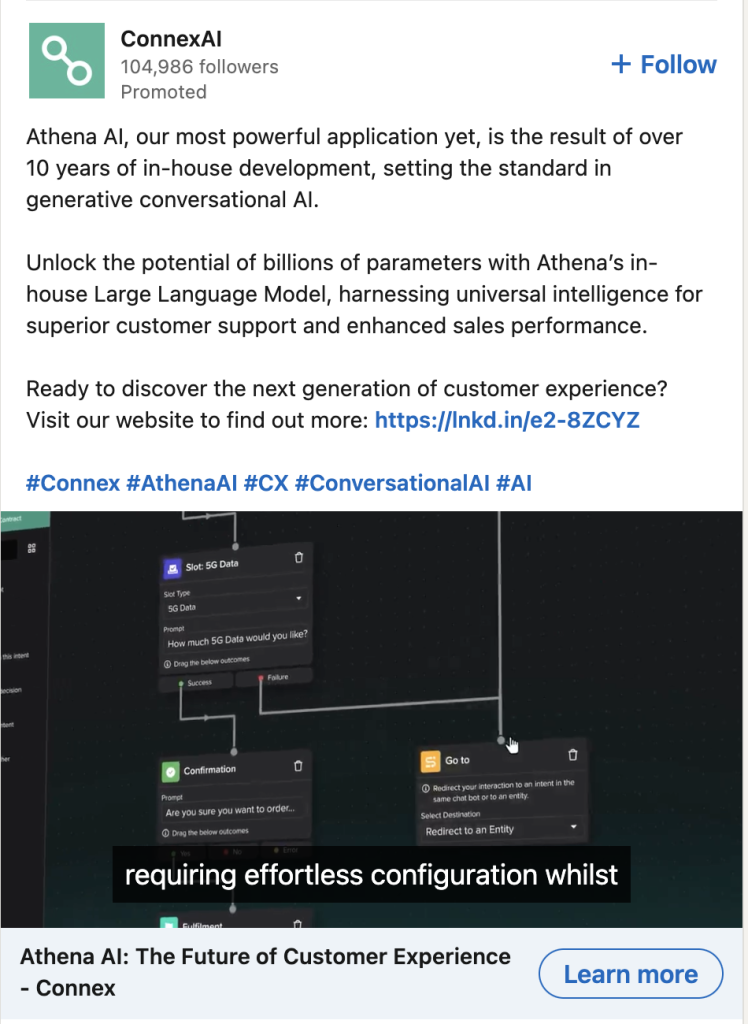
This is another in-feed image ad from Sumsub on Twitter:
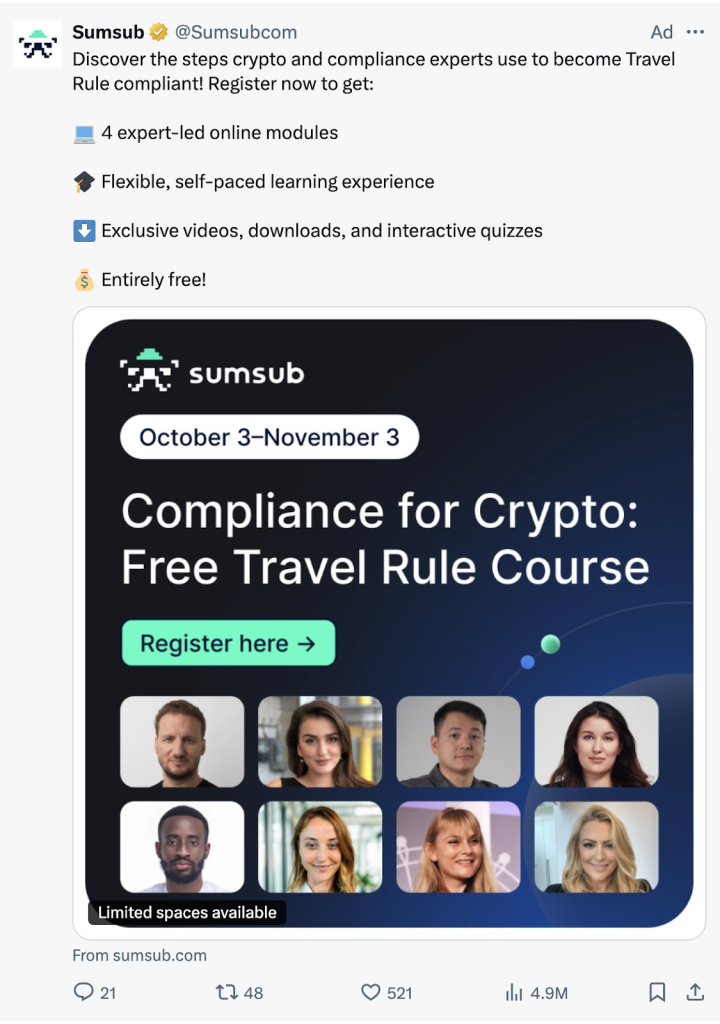
Why Paid Social?
Organic social is quite similar to SEO (search engine optimization). It can take time to rake views, engagements, and even conversions. But with paid social media, you can cut through the noise and get your ads seen by people who need them the most.
Like paid search, paid social has targeting capabilities to help you reach people who are likely interested in your product/service. For example, an online fashion store can target customers who have interacted with fashion-related content to increase the likelihood of engagement or conversions.
Another benefit of using paid social media is access to different interactive ad formats (video, carousels, polls, surveys, user-generated campaigns, etc.).
For instance, e-commerce brands can run virtual and augmented reality ads on Snapchat and TikTok to provide users with a more engaging and immersive experience. With this, (potential) customers can virtually try out products before buying them.
See this creative example from Ikea when they launched IKEA Place, a VR-based app that allows users to place furniture virtually in their space:
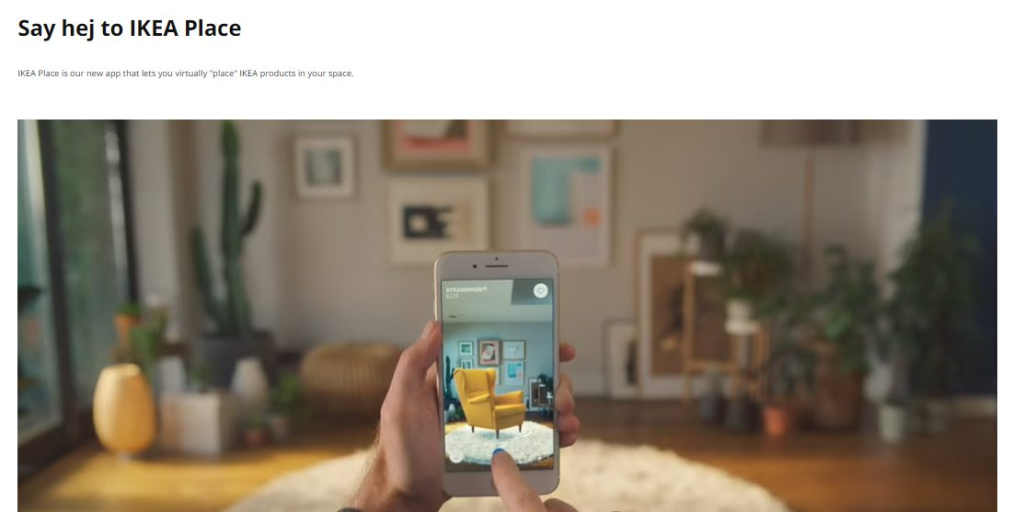
Thirdly, social media has a large audience that allows you to reach more people than you would on search engines. Instagram, for instance, has 2 billion active users, which is almost 3X Europe’s total population!
Key Differences Between Paid Search and Social
Now that we’ve explored the benefits of paid search and social, what are the significant differences and best use cases for both?
1. Audience Targeting
One key difference between paid search and social is their targeting capabilities. While you’ll find common grounds, both differ in some ways.
Paid search is more intent-focused; it allows you to reach people actively searching for your business online. For example, someone searching for “how much does refurbished iPad Air 5 costs” is looking to purchase immediately or compare options before buying (consideration stage).
In terms of targeting capabilities, search ads allow you to target audiences based on their demographics (age, location, income, etc), past behavior (purchase patterns, browsing history, etc), and interests. You can even reach visitors who have once visited your website and interacted with your content but didn’t convert.
Google Ads, for example, allows you to segment people based on “who they are, their interests, habits, browsing history, and how they have interacted with your business.” See below:

You can also leverage Google’s dynamic prospecting to reach new customers for your high-value product pages. This feature uses artificial intelligence (AI) to predict which audience segments are in the market for your product/service based on their behavior, search intent, and previous search history.
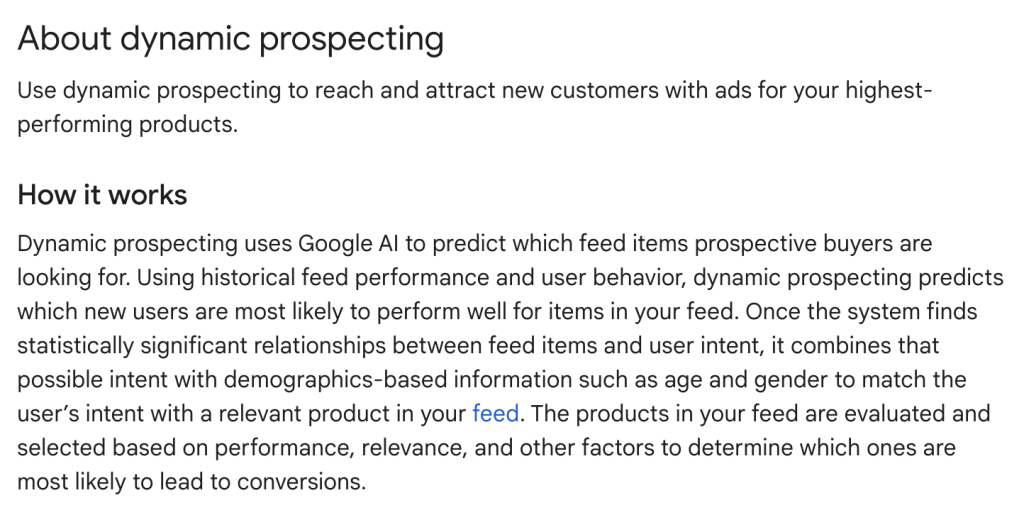
These hyper-targeting capabilities can help you to maximize return on ad spend (ROAS) and overall ROI.
Unlike paid search, paid social is more impulse or emotion-based advertising. This means that your ads are shown to people who aren’t actively looking for a solution to their problem. They may not even be aware they have a problem. This is why it’s best to create awareness about a product/service.
There’s a caveat, though. Paid social can also be effective for bottom-of-the-funnel marketing if:
- You have a large follower base
- Need to run a clearance or seasonal sale with discounts
- Target similar audiences who have purchased from you in the past
- Re-market to users who have shown interest in your ad. E.g., open a lead generation form or fill out a form on your website.
Also, just like a paid search, you can target audiences based on demographics and interests in social media ads. However, this depends on your channel, as each social channel has its unique audience segment and targeting features.
For example, Facebook allows you to target (potential) customers based on age, location, and interests:
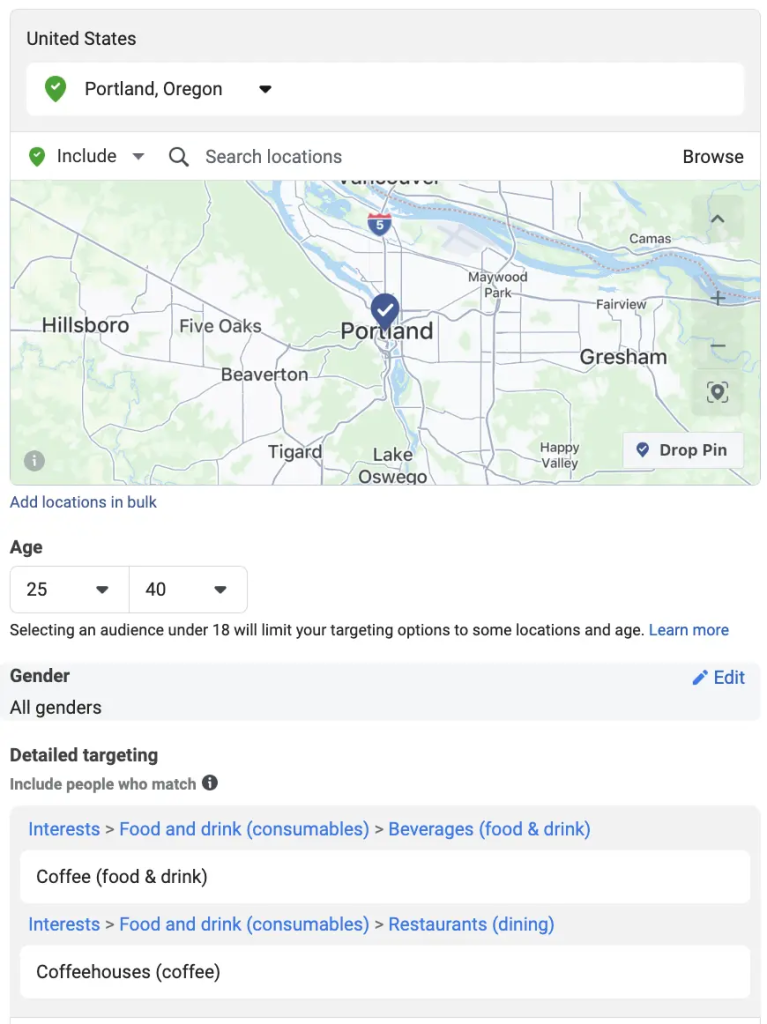
It also supports pixel-based audience targeting, where you place a code in your site or app to track user engagement and segment them based on behavior. This way, you can choose to show ads to people who completed a specific action, such as downloading an ebook, filling out a form, clicking on a CTA (call to action), etc.
On the flip side, TikTok targeting features are interests, devices, income, hashtags, and spending power:
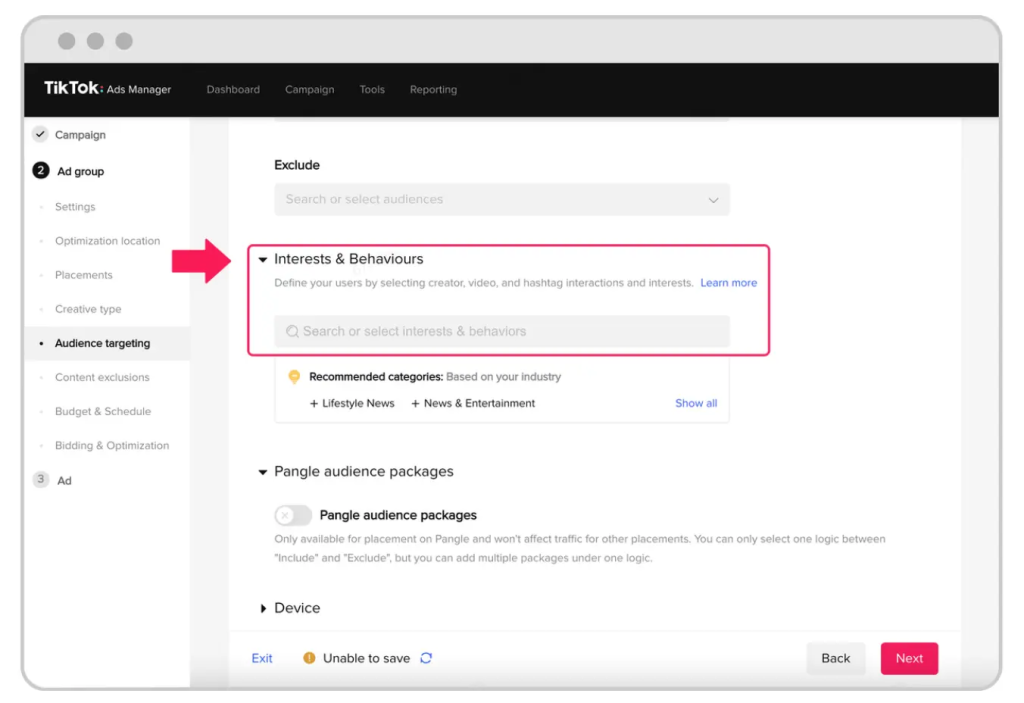
On LinkedIn, you can create custom audiences by integrating data from your customer relationship management (CRM) system or creating lookalike audiences based on your already-built connection/customer base:
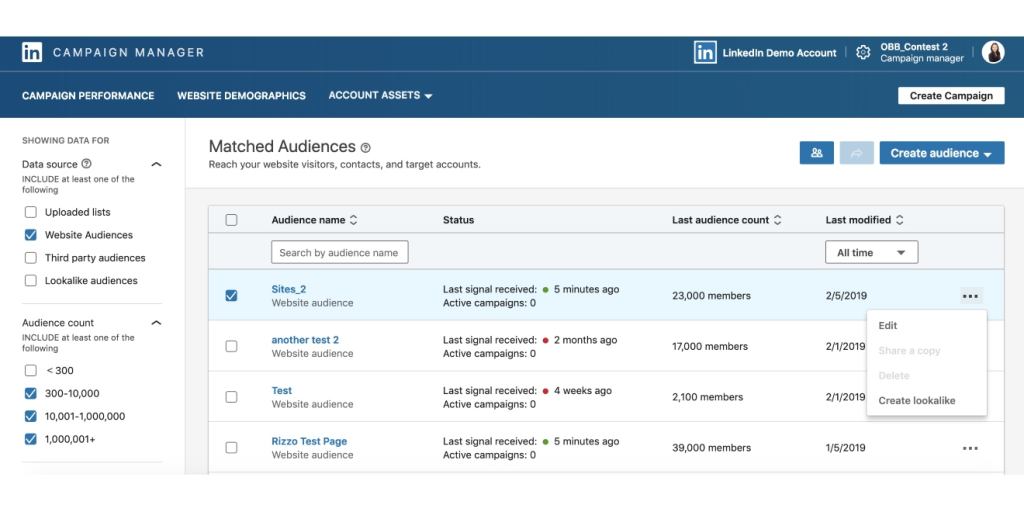
2. Ad format & Intent
Search ads are text-based and target users searching for specific products or services. They feature a short copy, meta description, title tag, and other ad extensions.
See this example for the keyword “best call tracker app.”

Since search ads are text-based. They’re perfect for visitors looking for informative and actionable web pages that solve their pain points or help them make informed decisions.
For example, a user looking to visit Montreal, Canada, might be looking for the most comfortable hotels in that location. In this case, a search ad like this from Travel Lemming caters to the user intent as it lists the best areas to stay, including their pros and cons:
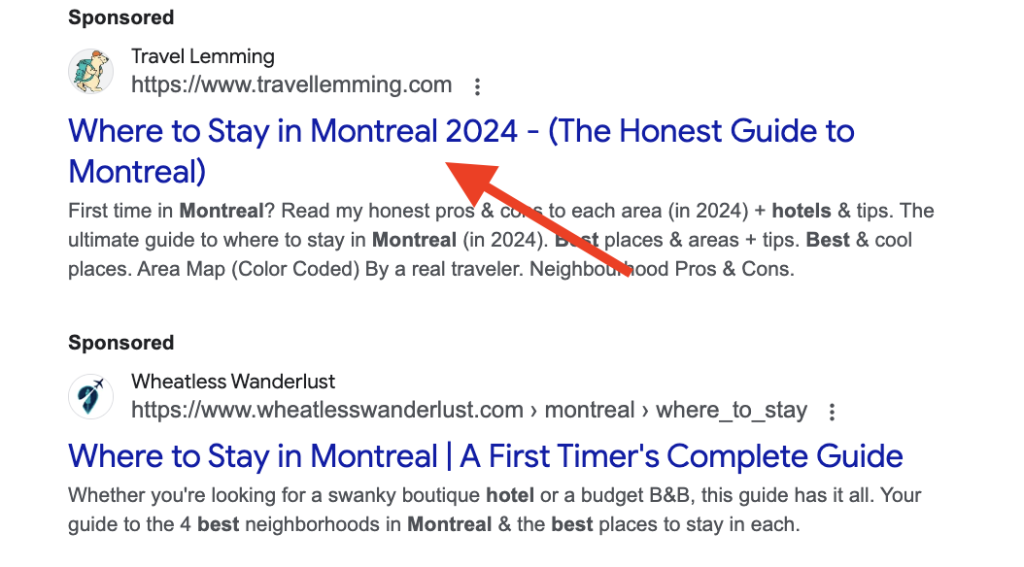
In contrast, paid social isn’t limited to text-based ads. You can display your ad in different formats— images, videos, carousels, or interactive formats like in-message, stories, lead forms, collections, or VR ads (as shown in the IKEA example above). The goal is to capture the audience’s attention, even when they’re not actively searching for your product/service.
For example, if you want to create awareness of your new product, you can run carousels or video ads to show different angles of your product. See this Facebook carousel ad from Tieks promoting their new ballet flats:
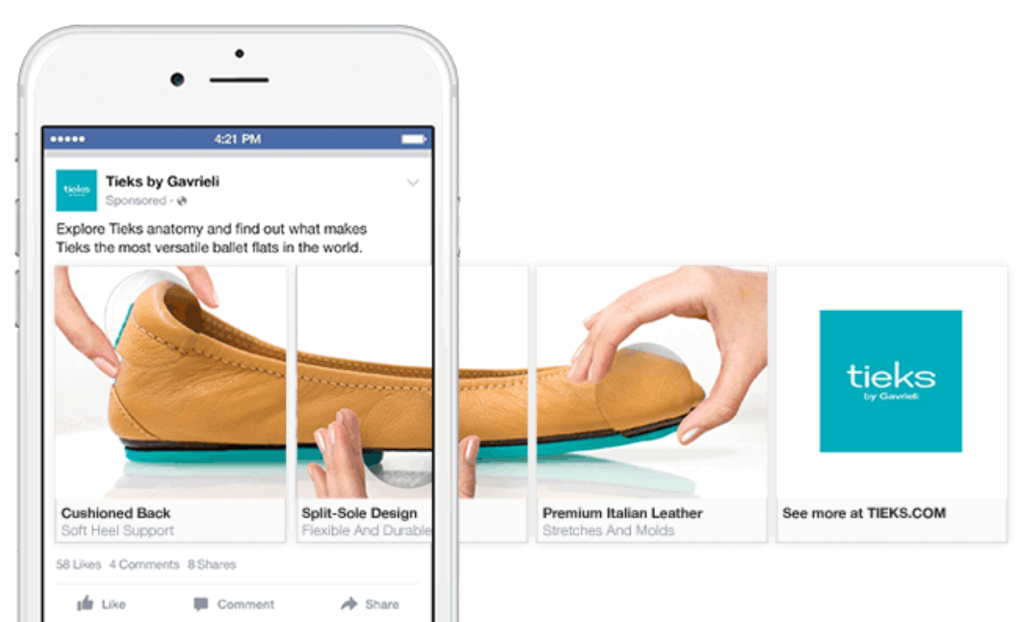
Or, if your goal is conversions, you can leverage LinkedIn lead gen forms to capture leads directly on LinkedIn or TikTok shop ads to allow users to purchase products within the app.
For example, see this simple Lead Gen Forms ad from Minnow Technologies advertising their Minnow Pickup pod. The ad is targeted to companies who need to streamline their food delivery process:
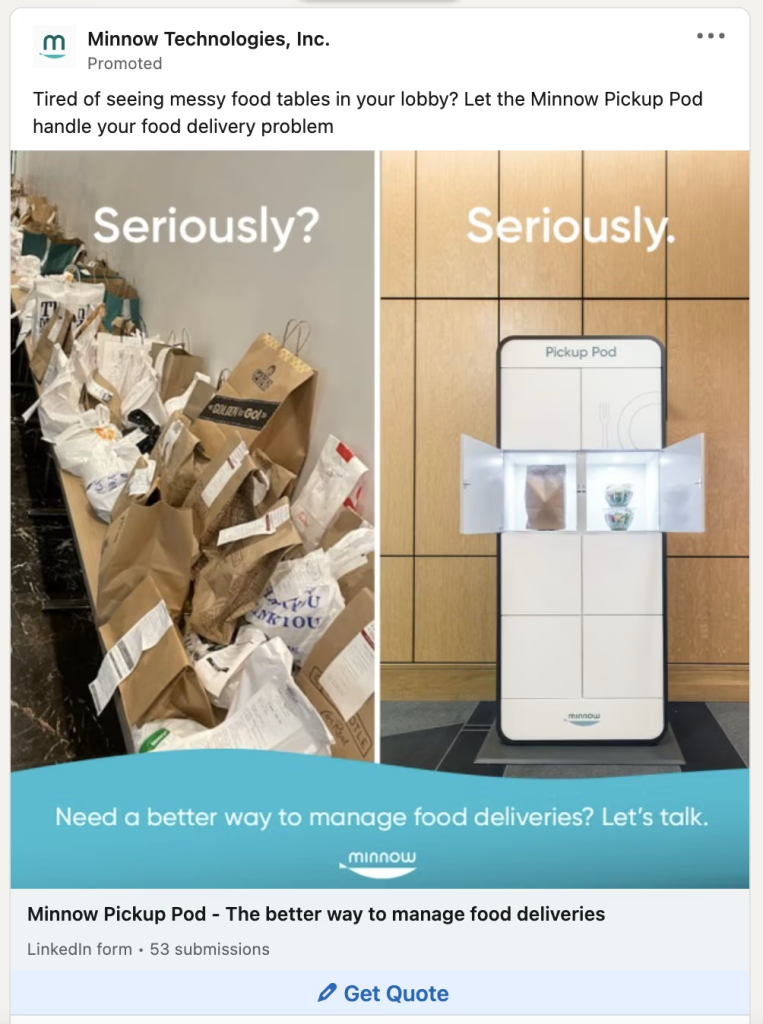
3. Duration
Paid search ads are typically immediate and short-term. People who see your search ads can decide whether to click through and convert.
Also, search ads don’t have long-lasting aftereffects after the campaign ends, which is why they’re best for targeting users at the end of the marketing funnel. To increase your conversion rate and achieve maximum ROAS, target long-tail keywords with conversion intent—that is, the “ready-to-buy keywords.”
In contrast, paid social is more advertiser-induced. Since users are not actively searching for anything specific, the intent is much lower, and sales may not happen right away. In this case, paid social works best for targeting top-of-the-funnel users or generally creating awareness for your product/service. And unlike paid search ads, it has long-lasting after-effects as users who engage with your post may return to purchase when the need arises. They’ll also most likely see more of your posts in the future because the algorithm registers their engagement.
Let’s examine a possible use case:
When you run an Instagram ad promoting your new bridal collection, it may not convert immediately.
But during the campaign, you’ve created brand awareness and got impressions from people interested in wedding dresses. They may check your profile, engage other posts, or follow your account to see future uploads. So, when the need arises to purchase, they’ll most likely remember your brand — even after the campaign has ended.
4. Conversions
Since paid and search ads target different customer intent, the conversion will also differ.
Typically, paid search offers a higher conversion rate than paid social media. This is because it allows you to target high-intent keywords, and this increases the chances of conversion right away. Research validates, too. According to Wordstream, the average conversion rate for Google search ads is 3.75% and 2.1% for social ads.
As you can see, the conversion rate for paid social is low. This is because the ads are shown to users who aren’t necessarily looking to make a purchase immediately. However, they’ll remember your brand when they want to buy — but you won’t know they came from an ad you ran.
5. Metrics
Lastly, both paid search and social media target different metrics, but this largely depends on the goal of your ad.
The most important metrics to track for your search ads are:
- Impressions – This measures the number of times people see your ad on the search results.
- Click-through rate (CTR) – This measures the number of people who click on your ad after seeing it.
- Cost per click (CPC) – This is the average amount you pay whenever a user clicks on your ad.
- Search per Impression Share (IS) – This is the ratio of the number of impressions your ad gets and the total number of impressions your ad can get.
- Conversion rate – This measures the number of people who take a desired action after clicking your ad
- Cost per conversion (CPC) – This is the amount you pay for each conversion gotten from your ad
- ROAS – This is used to determine the profitability of your search ad campaigns
For your paid social ads, track:
- Audience growth rate – The percentage of new followers gained from your ad campaign
- Engagement rate – The percentage of users who interacted with your content. This includes likes, comments, and shares.
- Conversion rate – This measures the number of people that take a desired action after clicking your ad
- Cost per mile (CPM) – The amount paid per 1000 social media users that see your ad
- Cost per click (CPC) – This is the amount paid for each click on your social ads.
- Click-through rate (CTR) – This is the percentage of people who clicked your ad after seeing it
- Impressions – This is the total number of times your ad is served on your social advertising platform
- ROAS – This is used to determine the profitability of your social ad campaigns
Paid search vs Paid social: which is a better choice?
There’s no right or wrong answer to this, as it depends on your business and what you’re trying to achieve with the ad. Let’s explore some use cases.
- Niche: If you’re in the e-commerce industry or have product categories to promote, social ads will be a perfect fit because they allow you to showcase your product alongside the copy.
You can also use different visual options to tell your brand story and pique users’ interest before they’re ready to buy.
Paid search is equally effective for running e-commerce ads. But if you don’t want to be limited by keyword search volume or finding the right target keywords, paid social is your best bet.
- Target audience: If your customers are more likely to find you on search engines, opt for paid search instead of paid social. This works vice versa.
- Goals: If your primary goal is sales or conversions, search ads are the way to go. Paid search is intent-based advertising, and it allows you to target people who are actively looking for your product/service online.
However, social ads are more effective if you’re looking to build awareness and engagement. As I shared above, paid social ads are more advertiser-driven, so people who see them may not convert right away.
- Budget: Generally, paid social costs less per click compared to paid search. This is because paid social media is not restricted to keyword intent.
Overall, both strategies are best combined. You can use paid social media to generate awareness and engagement for your product/service and use retargeting campaigns on search ads to reach people who have visited your website but didn’t convert. However, if you’re still unsure, schedule a free call with our PPC experts! We’ll review your website and recommend the best strategy for your needs.
